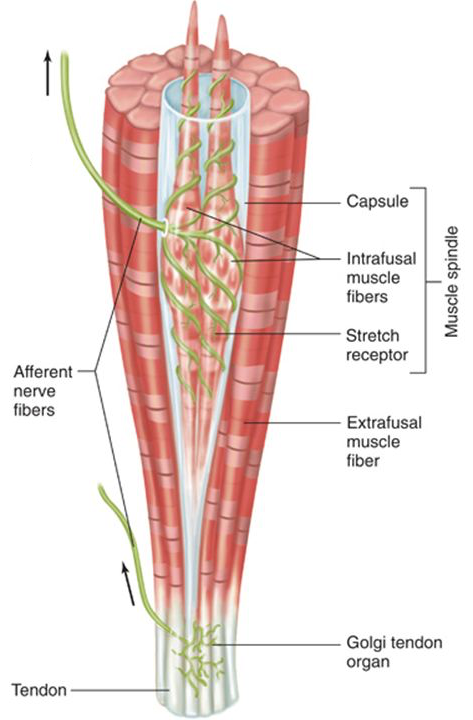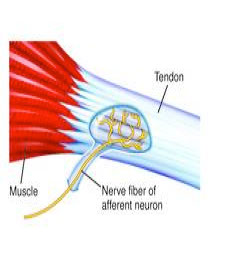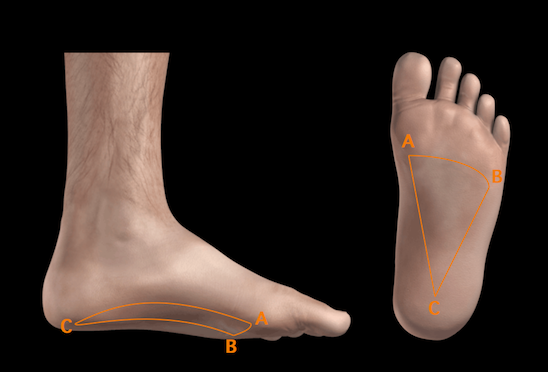There the three primary influences of the podal sensor on the postural system.
- Causative
- Adaptive
- Combination of Both
Sensory receptors of the foot
Proprioception
- Muscles spindles
- Golgi receptor organs
- Joint receptors
Exteroception
- Cutaneous Mechanoreceptor (the plantar sole)
Proprioceptors
Muscle Spindle
Functions as a stretch receptor monitoring the length of the muscle in which it is embedded; its greatest density is near the belly of the muscle; rapid, ballistic stretching stimulates the muscle spindle causing an involuntary contraction of the muscle being stretched

Golgi Receptor Organs
A small sensory receptor, located at the junction between a muscle and tendon, that monitors tension. The organ is activated by muscular contractions that stretch the tendons. The result in an inhibition of alpha motor, causing the contracting muscle to relax, thereby protecting the muscle and connective tissue from excessive loading.

Joint Receptors
Joint kinesthetic receptors located within and around the articular capsules of synovial joints
Free nerve endings and type II cutaneous mechanoreceptors in joint capsules detect pressure
lamellated corpuscles outside articular capsules detect acceleration and deceleration of joint movement
Arches of the Foot:
- Anterior Transverse Arch (A-B)
- Lateral Longitudinal Arch (B-C)
- Medial Longitudinal Arch (A-C)

Spaly Foot
Splaying of the forefoot is a condition where the intermetatarsal ligament is soft and loose, allowing the foot to spread. In some cases the splaying can be a direct result of over pronation. As the foot pronates and the longitudinal arch collapses, the transverse arch of the foot also will collapse. Once this happens an the metatarsal heads are aligned and this causes them to spread to make room. Now that all the metatarsal heads are on the ground, as the foot pushes off during gait, the stress of body weight and propulsion is put onto the metatarsal heads. This will cause damage to the metatarsal heads and tendons associated with them.
